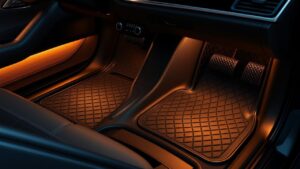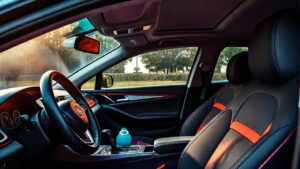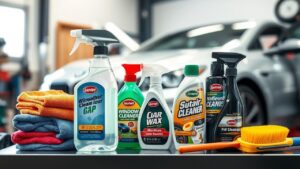you’ve just parked your car, given it a good wipe down, and are already imagining how good it looks. All of a sudden, a bird decides to leave its droppings on your car, and to make things worse, the sun is constantly beating down on your vehicle or some unwelcomed rain showers decide to show up. This brings us to the all important question – do I really need a car cover?
For those who don’t know, a car cover is basically a protective layer meant to be placed on a car to guard it from dust, rain, UV rays, and scratches. While it is marketed as a car’s ultimate protective device, does it really live up to the hype? Unfortunately, for too many car owners, the paint still shows signs of suffering, not only because of swirls and water stains, but worse of all – scratches caused by the cover.
If only there was a way to dictate when and how to use a car cover effectively. This is something that everyone can agree on – there are so many different types of covers out there and not all of them are made for the same purpose. The fact of the matter is, using covers in the wrong way can be damaging to your vehicle. The goal here is to provide you with relevant information and analysis so you can make an educated decision.
At the end of this article, you will understand whether or not a car cover is worthwhile investing in, how to go about choosing one, and effective ways to prevent damaging your paint.
Do Car Covers Actually Protect Your Paint?

The simple and short response is: Yes, but only under specific conditions. A good car cover will protect your vehicle against dust, UV rays, and even light scratches. On the other hand, a poorly made car cover can cause more damage than good.
Pros of Using a Car Cover
- Protection from Dust and Dirt: Fine dust particles will not settle on the car’s paint enabling the car to avoid micro-scratches while being cleaned.
- UV and Heat Protection: Fading, oxidation, and cracking of paint along with other internal surface furnishings is prevented.
- Weather Resistance: A car cover retains a vehicle against rain water, bird droppings, tree sap and other harmful environmental pollutants.
- Security and Theft Deterrent: Covers serve as a primary layer of defence against thieves as the vehicle is devoid of the registration number and make which is often sought by these culprits.
- Reduced Maintenance: External elements having less of an effect means fewer washes and less frequent waxing.
Cons of Using a Car Cover
- Potential for Scratches: If the cover is dirty or not used properly, scratches will be obvious because of dust being trapped under the cover.
- Moisture Trapping – When non-breathable covers are used, they tend to trap moisture and humidity. This, in turn, leads to water spots, mold, and rusting.
- Inconvenience – Covers that need to be put on or removed too frequently require time; these can be cumbersome to take off and put on if the vehicle is used daily.
- Wind Damage – Improperly secured loose covers can flap in the wind. This movement can cause friction which can further damage the paint on the car.
How Car Covers Can Cause Damage (If Used Wrongly)
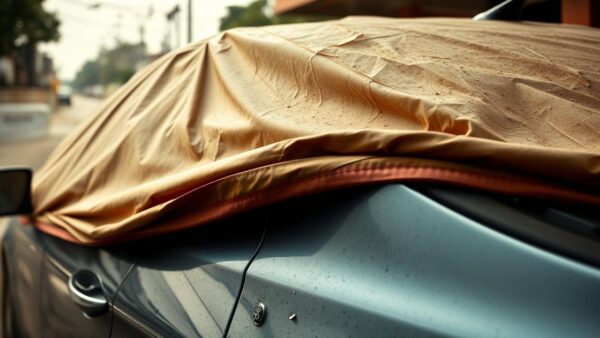
A car cover is not a magic shield—it can cause more harm than good if misused. Here’s how:
1. Dirt and Dust Under the Cover = Scratches
Even thin layers of dust, when trapped under the cover, can act like sandpaper. Failure to wipe the car before covering it will result in swirl marks and micro-abrasions.
2. Non-Breathable Covers = Paint Damage and Mold
The cheaper plastic or waterproof covers waterproof some moisture that is captured inside. This can lead to rusting, water spots and mold growth over the years.
3. Loose Covers = Paint Wear
When wind flows against a car, a loose cover will rub the car, especially if the car isn’t fitted with covers. Over time, this friction will wear the paint down and expose the clear coat.
4. Improper Usage = More Harm Than Good
Covering the car while it’s wet? That’s a cover waiting to trap you in trouble. It’s common sense that a cover must only be placed on a dry, clean vehicle to stop moisture from seeping in.
Choosing the Right Car Cover: What to Look For?
Not all car covers are the same. Here’s what you should consider before buying one:
| Feature | Why It Matters |
| Material | Soft, breathable fabrics (like cotton blends) are safer for paint. Avoid plastic or vinyl-only covers. |
| Fit and Size | A custom-fit cover prevents flapping and rubbing, reducing paint wear. Avoid universal covers that fit loosely. |
| Weather Resistance | Choose waterproof but breathable covers for outdoor use. Indoor covers can be lighter and softer. |
| Inner Lining | A soft, non-abrasive lining prevents scratches. Felt or fleece is ideal. |
| Security Features | Straps, buckles, or lock mechanisms help keep the cover in place, even during strong winds. |
When Should You Use a Car Cover?

Car covers are not deemed necessary at all times. This is when it is most effective:
- Long-Term Parking – Covering the car, which is not going to be used for a few weeks, will help in protecting it from dust and UV rays.
- Outdoor Parking- If you don’t have a covered parking, you can use a high quality car cover that will protect you from bird droppings, tree sap, and harsh weather conditions.
- High-Pollution Areas- When living in a dust-heavy industrial area, using a car cover can help keep your car clean.
When not to use a car cover:
- Daily Use- If you drive the car on a daily basis, covering and uncovering the car becomes an inconvenience.
- On a Wet or Dirty Car- Covering a wet or dirty car traps moisture and particles which makes it more prone to paint damage.
- In Windy Conditions (Without Proper Securing)- A cover that is loosely fitted may rub on the car causing scratch marks on it.
Alternatives to Car Covers
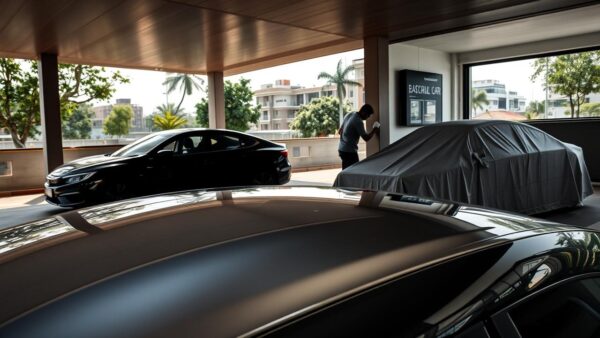
Here are a few options if a car cover does not fit your needs.
- Carports and Covered Parking- The simplest method to protect your car from other elements without the hassle of covers.
- Ceramic Coating or Paint Protection Film (PPF)- These methods offer permanent protection against dust, UV rays and light scratches.
- Monthly Waxing or Sealant Application: A layer is created on the paint which lowers the chances of accumulating dirt or getting water spots.
- Microfiber Dust Covers (Indoor): For those who have parking space inside, a light microfiber dust cover can be effective in preventing dust accumulation without the risks involved with a heavy outdoor cover.
Final Verdict: Should You Use a Car Cover?
Car covers can protect the paint of your car, but only if you have the appropriate cover and utilize it properly. Make sure you choose a high-quality cover that can breathe and is the right size, and also ensure that your car is clean and dry before it is put under cover.
To many car owners in India, a car cover makes sense, especially for those who park outside for long durations or leave their car unused for a more extended period of time. But for daily users, other methods of protection such as ceramic coating and waxing would be bust preferable.
Protect Your Car the Right Way with Mecarnic
If you are looking for a car cover that won’t destroy the paint of your car, head over to Mecarnic. We provide premium car accessories such as breathable and paint-safe covers that are specifically designed for the Indian weather.
We have a range of car protection accessories so you can give your car the treatment it deserves. The right cover can make all the difference.







